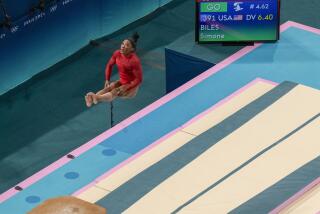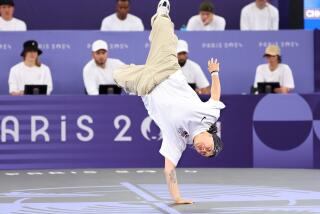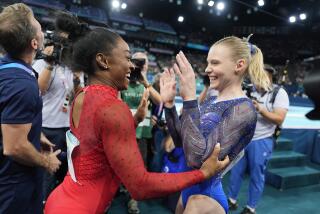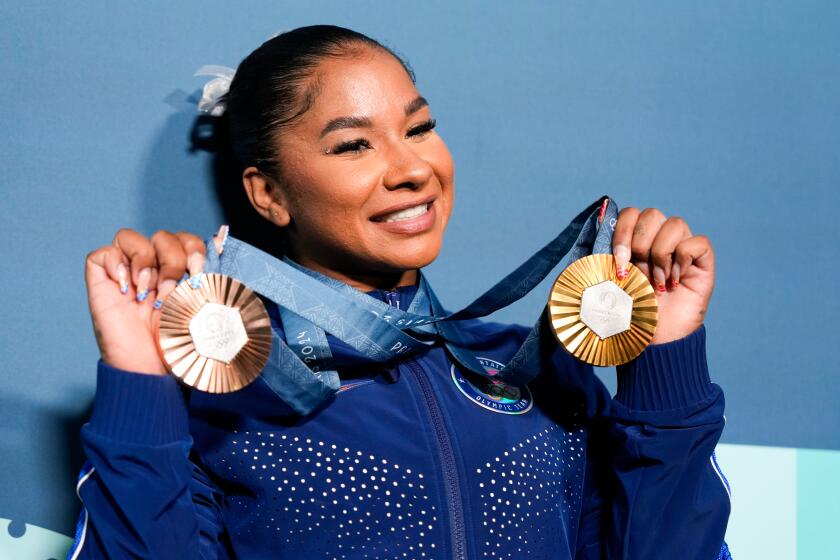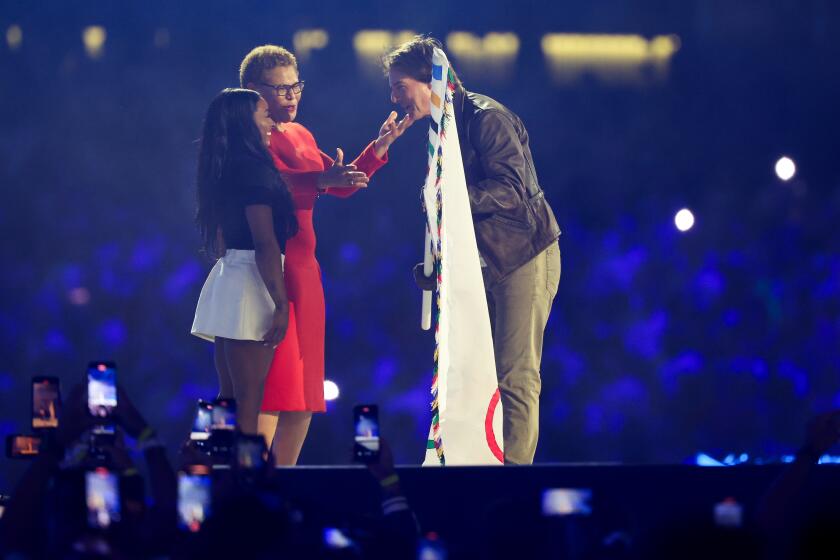Athletes as Artists
The perpetual clash between athleticism and artistry in women’s figure skating will be played out again at Salt Lake City.
Will Sasha Cohen of Laguna Niguel make history--and the first major technical leap by women in nearly a decade--by landing a quadruple jump in her long program?
Or will the interpretive skills of 1998 silver medalist Michelle Kwan of the U.S. and Russia’s Irina Slutskaya count more heavily in deciding who wins the gold medal?
A decade ago, the jumping possibilities seemed so unlimited for female figure skaters, coaches and officials frequently expressed fears the sport would evolve into “figure jumping.”
Midori Ito of Japan became the first woman to land a triple axel in competition in 1989, and two years later Tonya Harding became the first American woman to land the 31/2-revolution jump.
Although the triple axel never became common, triple-triple jump combinations became staples and women inched closer to the exploits of the men, who had been doing quadruple jumps since Kurt Browning of Canada landed a quadruple toe loop at the 1988 World Championships.
But as women pushed the physical limits of the sport, they were brought back to earth by hip, vertebra and other stress-related injuries.
No female figure skater has a triple axel in her repertoire and none has landed one in a major international competition in at least five years. Some have practiced it but subsequently backed off because they couldn’t master it or because they developed back or leg problems.
Slutskaya landed a triple-triple-double combination at last year’s World Championships and hinted at a triple-triple-triple.
However, neither she nor Kwan--the Olympic co-favorites--has landed a clean triple-triple in competition this season. Both found it tough to consistently balance artistic and athletic excellence, paying a price physically and psychologically.
“How far can the women’s singles event go without destroying bodies? And at what price?” said Sandra Bezic, a choreographer who has worked with Olympic gold medalists Tara Lipinski, Kristi Yamaguchi and Brian Boitano and will be a commentator for NBC at Salt Lake City.
“The younger they go, when they’re practicing difficult jumps while they’re still growing and their bodies are changing, the more dangerous it is. It is different for the men’s event. They’re always after bigger, stronger, higher.”
Cohen, second at the U.S. championships, has been working on a quadruple salchow, in which she takes off from the back inside edge of one skate, rotates in the air four times, and lands on the back outside edge of the opposite foot.
She has cleanly landed perhaps half a dozen in practice but has fallen each of the three times she tried it in competition. She didn’t attempt it at the U.S. championships in January.
After securing her Olympic berth, Cohen vowed to try her quad at the Olympics.
Her coach, John Nicks, backs her.
“I feel very strongly that it’s not right to restrict ladies’ advanced content when everybody seems to admire the wonderful men, and yet they feel the ladies should not be able to do this,” he said.
“I don’t understand that. I think the lady has equal rotational ability as a man and sometimes, much better control, and I see no reason why ladies can’t continue to progress in content.”
But Bezic believes women need not push themselves to the point of physical breakdown if they can instead focus on finesse and fundamentals.
“I don’t think there’s a necessity to continue to push technically as far as rotations, if you continue to push the balance between technical content and artistry,” she said.
More to Read
Go beyond the scoreboard
Get the latest on L.A.'s teams in the daily Sports Report newsletter.
You may occasionally receive promotional content from the Los Angeles Times.
